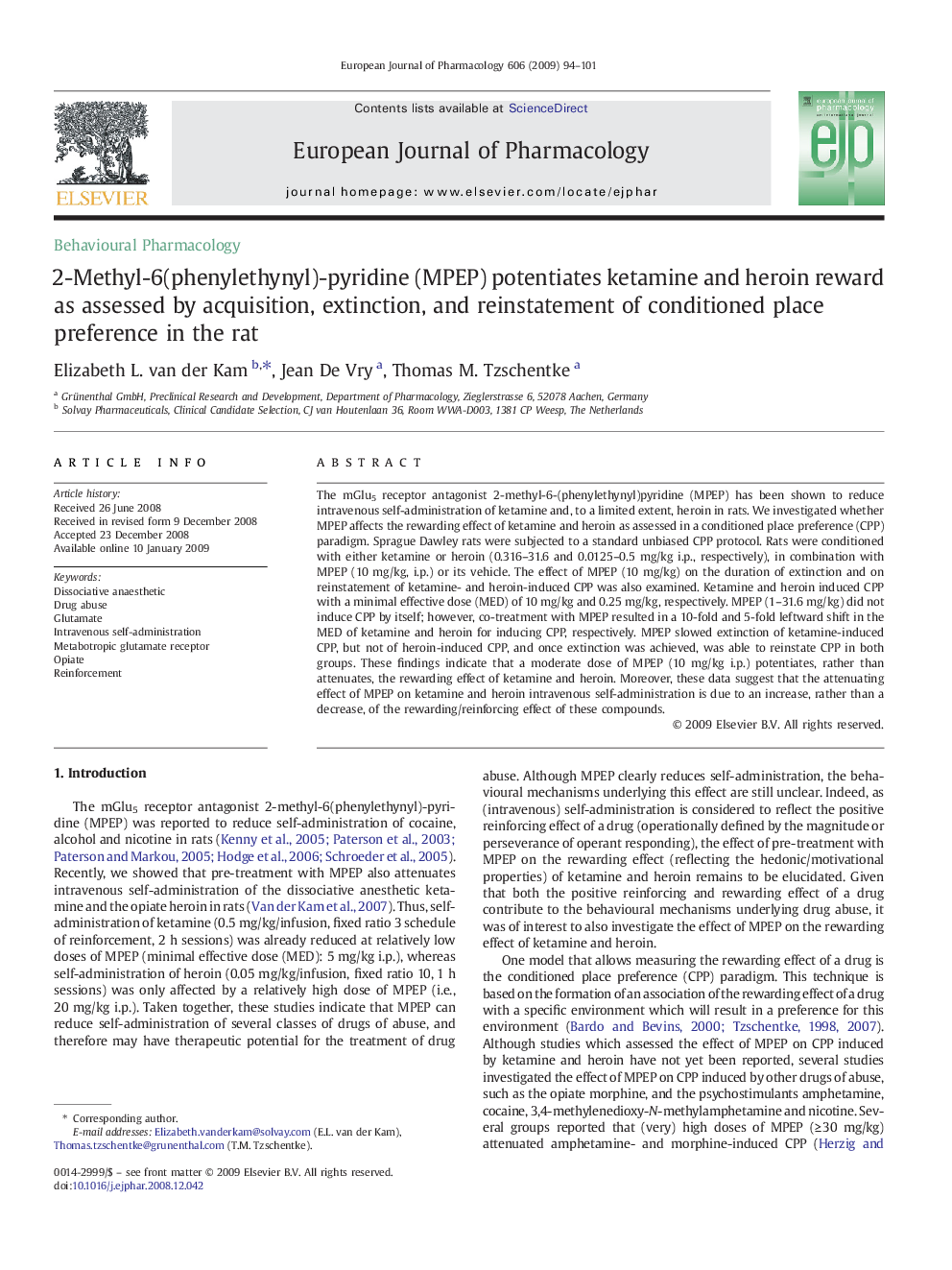| Article ID | Journal | Published Year | Pages | File Type |
|---|---|---|---|---|
| 2534395 | European Journal of Pharmacology | 2009 | 8 Pages |
The mGlu5 receptor antagonist 2-methyl-6-(phenylethynyl)pyridine (MPEP) has been shown to reduce intravenous self-administration of ketamine and, to a limited extent, heroin in rats. We investigated whether MPEP affects the rewarding effect of ketamine and heroin as assessed in a conditioned place preference (CPP) paradigm. Sprague Dawley rats were subjected to a standard unbiased CPP protocol. Rats were conditioned with either ketamine or heroin (0.316–31.6 and 0.0125–0.5 mg/kg i.p., respectively), in combination with MPEP (10 mg/kg, i.p.) or its vehicle. The effect of MPEP (10 mg/kg) on the duration of extinction and on reinstatement of ketamine- and heroin-induced CPP was also examined. Ketamine and heroin induced CPP with a minimal effective dose (MED) of 10 mg/kg and 0.25 mg/kg, respectively. MPEP (1–31.6 mg/kg) did not induce CPP by itself; however, co-treatment with MPEP resulted in a 10-fold and 5-fold leftward shift in the MED of ketamine and heroin for inducing CPP, respectively. MPEP slowed extinction of ketamine-induced CPP, but not of heroin-induced CPP, and once extinction was achieved, was able to reinstate CPP in both groups. These findings indicate that a moderate dose of MPEP (10 mg/kg i.p.) potentiates, rather than attenuates, the rewarding effect of ketamine and heroin. Moreover, these data suggest that the attenuating effect of MPEP on ketamine and heroin intravenous self-administration is due to an increase, rather than a decrease, of the rewarding/reinforcing effect of these compounds.
